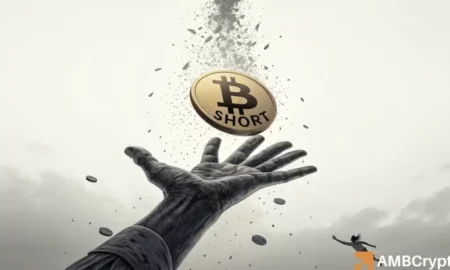Aster’s Price Drop: Analyzing the Market Dynamics and Future Prospects
Introduction to Aster’s Recent Decline
Aster (ASTER) has recently experienced a significant price drop, declining by over 10% in just a matter of days. This downturn can be primarily attributed to significant sell-offs by large investors, or "whales," who have been rushing to unload their holdings. This article will explore the factors behind this price decline, the implications for retail traders, and whether Aster has potential for a rebound in the near future.
Factors Behind the Price Drop
After facing resistance at $2.2, Aster fell to a low of $1.76 and was trading around $1.80 at the time of writing. This downward spiral was exacerbated by an influx of sell orders as long-term holders began to offload their investments. In the past three days, selling pressure in the spot market has surged, with 152.3 million tokens sold compared to only 124 million tokens purchased. The negative delta of 28.3 million highlights a clear trend of selling dominance and illustrates the market’s current bearish sentiment.
Whale Activity and Its Effects
A noteworthy event during this sell-off was a recent transaction where a whale deposited 6.1 million ASTER, valued at approximately $12.07 million, to the exchange Binance. Collectively, this whale offloaded around 12.9 million tokens, worth a total of $26.2 million, while retaining millions more. Such aggressive sell-offs typically indicate a lack of confidence among larger investors, signaling to the broader market that caution may be warranted.
Retail Traders vs. Whale Sentiment
Interestingly, while whale sentiment reflects bearish tendencies, retail traders appear to be adopting a contrarian approach by buying the dip. According to CoinGlass, Aster’s netflow has shown negative values for three straight days, indicating an increased accumulation by smaller investors. Historically, this has often preceded upward price movements, as retail buying pressure can create an imbalance that supports the asset’s price.
Futures Market Insights
Amidst the current downturn, the futures market presents a contrasting picture. Data from Nansen suggests that most traders are taking long positions on Aster, with long accounts rising and short accounts declining. This is further supported by an increase in contract buys outperforming contract sells, suggesting that many investors anticipate a market recovery. Such bullish sentiment in the futures market can be a critical indicator of potential price rebounds.
Can Aster Rebound?
Despite the negative indicators—like the Stochastic RSI entering oversold territory at 14.7 and a drop in the Relative Strength Index—there are mixed signals regarding Aster’s future potential. If current sellers, especially whales, persist in offloading, Aster could dip further to around $1.6. However, if retail buyers maintain their momentum and defend the $2 support level, there may be a path toward a recovery, with a target of reaching $2.26 in the near term.
Conclusion
In conclusion, Aster’s recent price drop has primarily stemmed from significant whale sell-offs and increased selling pressure. Yet, the actions of retail traders and optimistic signs in the futures market create a complex scenario signaling potential for a rebound. Whether Aster can stabilize and rebound significantly will depend on the behavior of both large investors and retail traders in the upcoming days and weeks. Investors should closely monitor market dynamics to make informed decisions moving forward.
















